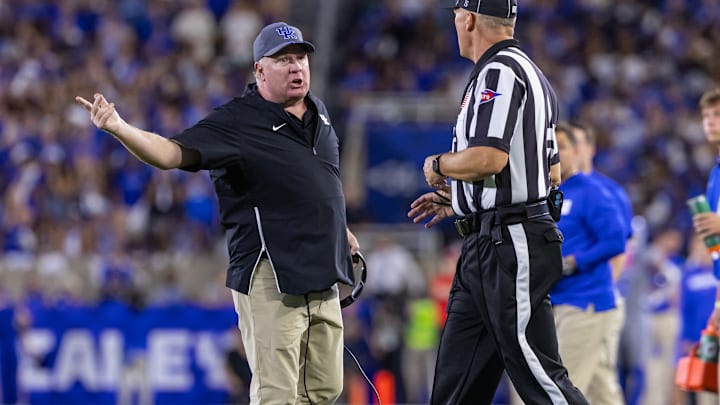It’s no secret that Kentucky Athletic Director Mitch Barnhart wanted to keep the SEC football schedule at eight games. That reliable third "buy game" was a crucial, if unglamorous, part of the formula that helped Mark Stoops consistently reach bowl eligibility. It was a practical, if not exactly ambitious, stance.
But the winds of change in college football are a force of nature, and now the SEC has officially moved to a 9-game conference schedule plus one required Power conference opponent. For the Wildcats, this means swapping a likely win against an FCS opponent for another brutal Saturday against an SEC foe. So, why did Kentucky and the rest of the conference concede? It came down to a few key factors that were simply too powerful to ignore.

A reluctant agreement
For years, Barnhart and Kentucky were part of a contingent that favored the 8-game model. It offered schedule flexibility and a clearer path to the six wins needed for a bowl game, which is the lifeblood for programs building consistency. Losing a game that is almost a guaranteed win in favor of another toss-up (or likely loss) against a conference powerhouse is a scary proposition. But the collective power of the conference, driven by fan expectations and television money, ultimately won out.
Why the SEC made the leap
According to college football insider Brandon Marcello, the push for a ninth conference game was multifaceted. The conference's athletic directors knew they had a problem on their hands.
- Fan Experience: Fans have grown increasingly tired of paying premium ticket prices for lackluster non-conference slates. ADs were feeling the heat over schedules padded with uninteresting "buy games." Adding a ninth SEC game immediately boosts the value of season ticket packages.
- CFP Metrics: With the College Football Playoff expanding, strength of schedule is more important than ever. A 9-game SEC schedule is a powerful argument for getting more conference teams into the field.
The bottom line: A financial windfall
Ultimately, the decision was sealed by a massive financial incentive. ESPN is providing each SEC team with an additional $5 million per year on average to make the switch. When you compare that to the typical $500,000 to $1.5 million payout for a buy game, the math is undeniable. Even after losing the buy game revenue, Kentucky stands to gain a net profit of at least $3.5 million, plus the additional revenue from a more attractive home game in alternate years. And sources suggest that $5 million figure could easily jump in future negotiations.
The pressure cooker in Lexington
This is a high-risk, high-reward move for Kentucky. The extra money is great, but it comes with immense pressure. The fans won't show up for a 4-8 team, no matter how much money the athletic department is making. After three seasons of middling results and a combined 18-20 record, the pressure is squarely on Mark Stoops to recapture the magic of his earlier tenure. The path to a bowl game just got significantly steeper. Can the Cats rise to the occasion, or will the nine-game grind prove to be too much?
Drew Holbrook is an avid Kentucky fan who has been covering the Cats for over 10 years. In his free time, he spends time with his family, and watching Premier League soccer. #UpTheAlbion
